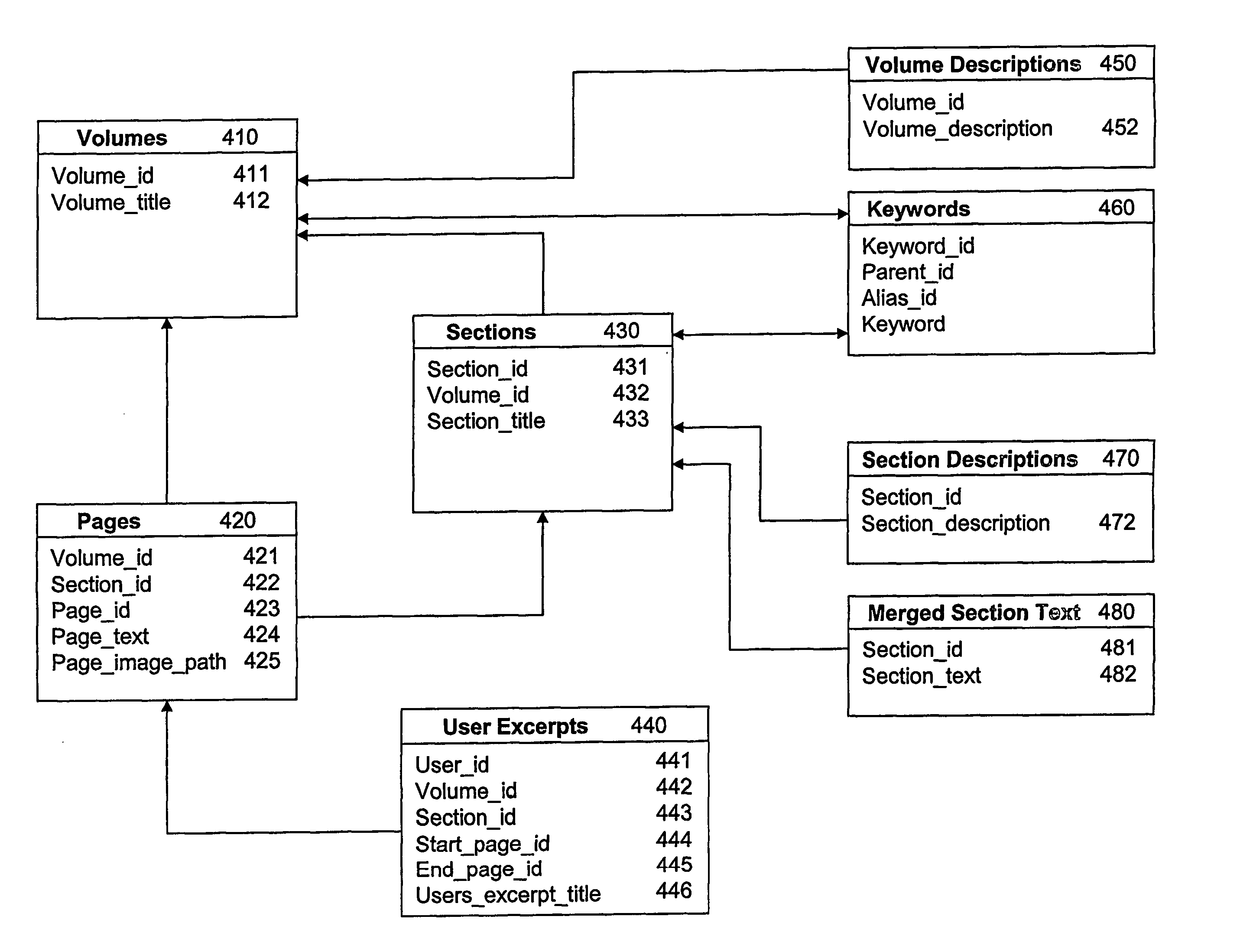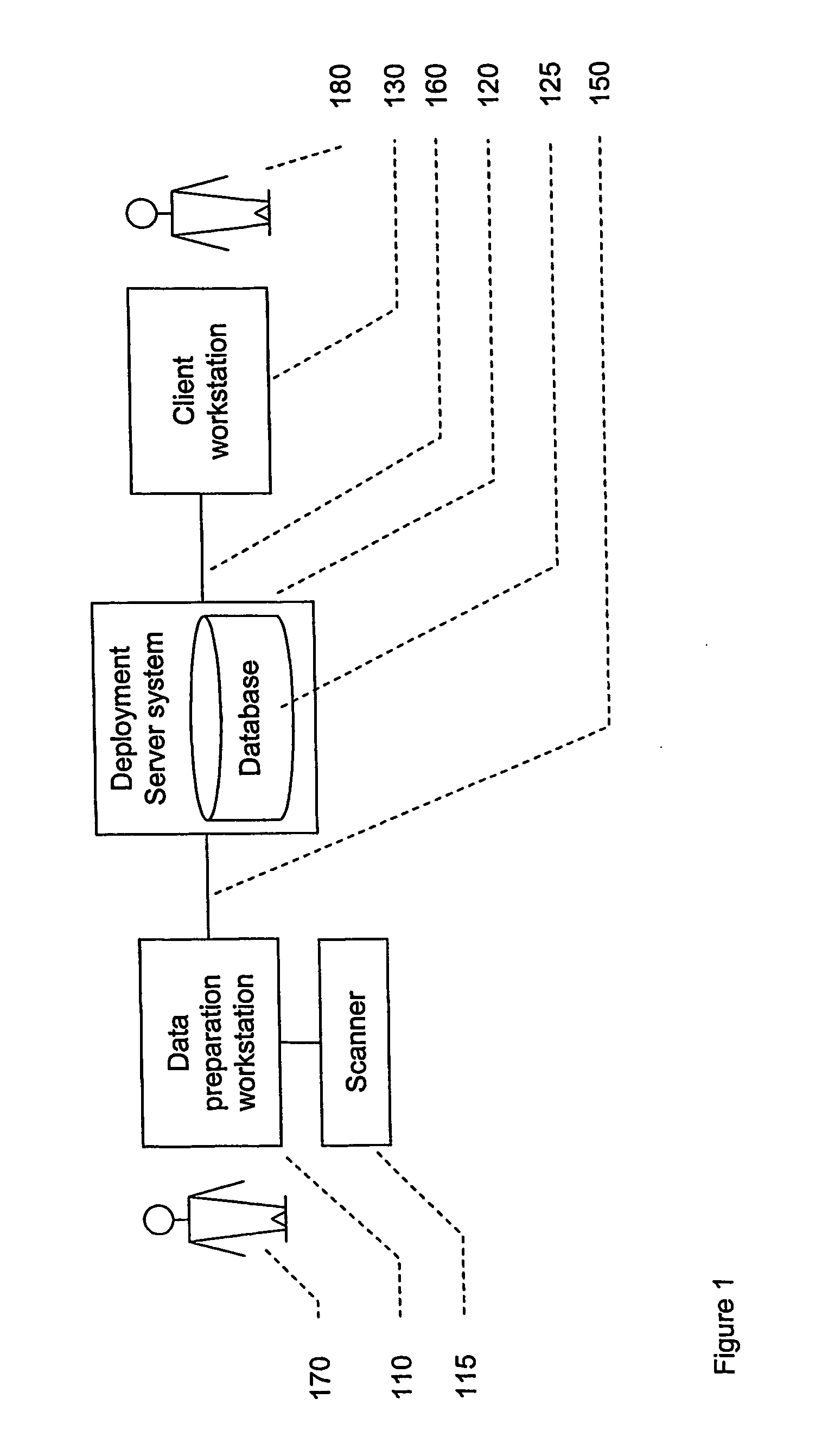Digital library system
a library system and digital library technology, applied in the field of digital library systems, can solve the problems of increasing linearly the cost and time required to build a basic digital library, increasing the cost of creating digital libraries with complex data structures and rich metadata, and often putting the building of digital libraries beyond the means, so as to increase the efficiency of the library system
- Summary
- Abstract
- Description
- Claims
- Application Information
AI Technical Summary
Benefits of technology
Problems solved by technology
Method used
Image
Examples
second embodiment
[0140] A second embodiment will now be described, which is generally similar to the first embodiment, for which like parts have been given like reference numerals and will not be described in further detail. The second embodiment applies to a digital document library deploying documents that are already available in electronic form but where the internal logical structure of the documents has not been identified.
[0141] In this embodiment, the structuring engine splits each document programmatically into data portions. If the content is unstructured but the file is in a multi-page format, it is split into separate page-sized files using known methods. If the content and the file are both unstructured, it is split into approximate page-sized files by splitting the file at every first blank line after a suitably-sized batch of lines. If the content has some programmatically recognisable structure, e.g. an encyclopaedia, dictionary, recipe book etc, it is split such that each structura...
third embodiment
[0145] A third embodiment will now be described, which is generally similar to the first embodiment, for which like parts have been given like reference numerals and will not be described in further detail. The third embodiment involves a more sophisticated distribution of data and engines between the hardware components of the system.
[0146] In this embodiment, the client workstation 230 includes a version of the enabling engine arranged to communicate with a local database. The workstation also includes a user interface program arranged to communicate with the remote sectioning engine 223 as well as the local sectioning engine.
[0147] The user interface can interact with the remote enabling engine, which in turn interacts with the remote database, in the manner of the first embodiment. In addition, the user interface can interact in the same way with the local enabling engine, which interacts with the local database. The user interface can cause the two enabling engines to synchro...
fourth embodiment
[0150] A fourth embodiment will now be described, which is generally similar to the first embodiment, for which like parts have been given like reference numerals and will not be described in further detail.
[0151] The fourth embodiment is an internet publishing centre enabling cartoon artists to self-publish their material In a collective, themed environment. In this embodiment, a data portion corresponds to a single cartoon strip, while each initial proxy asset references all of an artist's cartoons for one year, in chronological order. Users create additional proxy assets representing, for example, cartoons on a common theme, or strips that develop a running story.
[0152] In this embodiment, an enabling engine is running on a centralised server 220. Various artists each have data preparation systems similar to 210, at which they scan cartoon strips as they finish drawing them. The strips may have varying length, may be in colour or black and white, and may have any layout. Each s...
PUM
 Login to View More
Login to View More Abstract
Description
Claims
Application Information
 Login to View More
Login to View More - R&D
- Intellectual Property
- Life Sciences
- Materials
- Tech Scout
- Unparalleled Data Quality
- Higher Quality Content
- 60% Fewer Hallucinations
Browse by: Latest US Patents, China's latest patents, Technical Efficacy Thesaurus, Application Domain, Technology Topic, Popular Technical Reports.
© 2025 PatSnap. All rights reserved.Legal|Privacy policy|Modern Slavery Act Transparency Statement|Sitemap|About US| Contact US: help@patsnap.com



